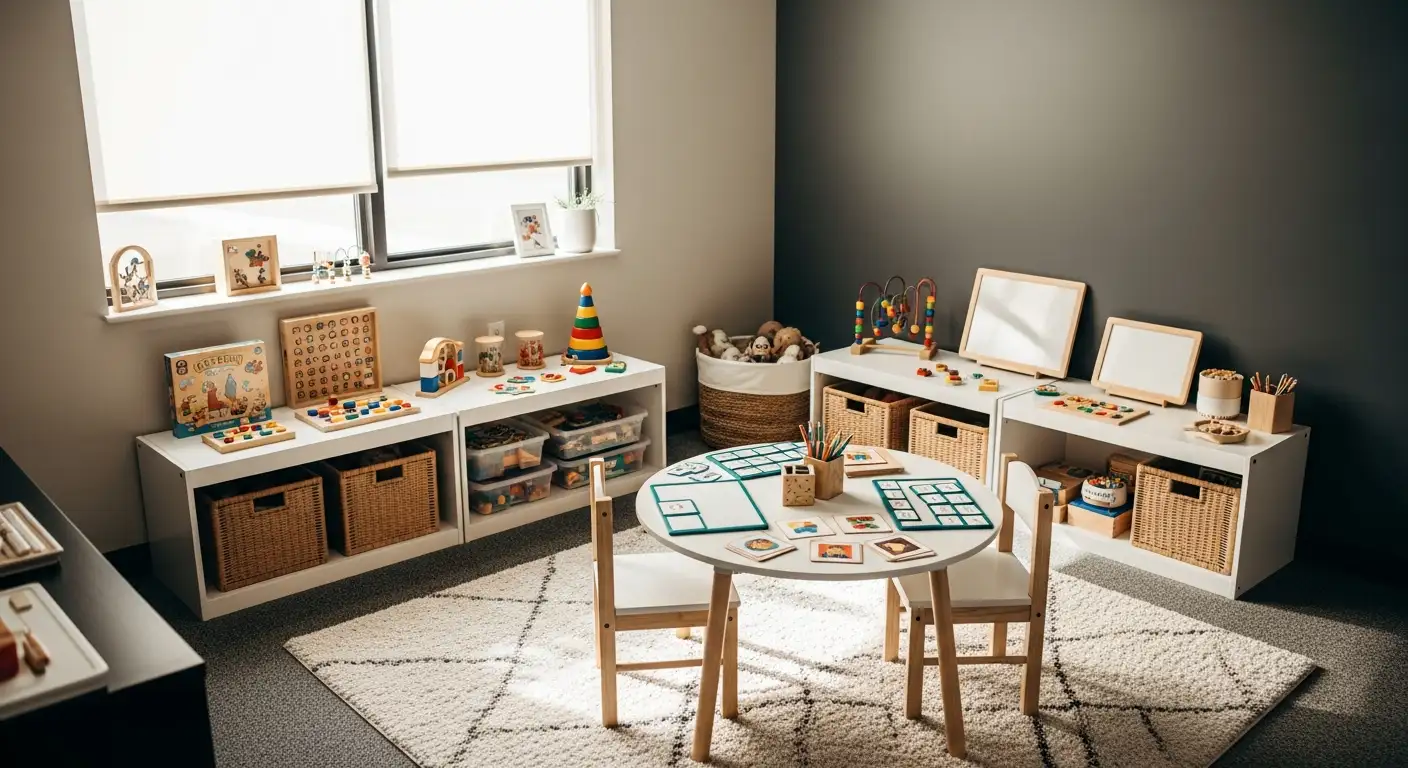How to Involve Parents in ABA Therapy for Better Outcomes


Introduction to Parental Involvement in ABA Therapy
Parental involvement in Applied Behavior Analysis (ABA) therapy is increasingly recognized as a critical component for achieving better outcomes for children receiving this intervention. Parents serve as essential partners by reinforcing therapeutic strategies and supporting skill generalization beyond the confines of structured sessions. This narrative explores diverse ways parents can be engaged effectively in ABA therapy, emphasizes the importance of clear communication, and offers strategies to foster successful collaborations between families and therapists.
The Importance of Parental Involvement in ABA Therapy

Why is parental involvement important in enhancing ABA therapy outcomes?
Parental involvement is fundamental in enhancing ABA therapy outcomes. Parents are vital in reinforcing learned behaviors at home, which leads to more sustainable improvements. Research indicates that therapy proves to be more effective when parents actively engage, resulting in better treatment adherence and overall outcomes.
When parents participate in their child's therapy, they help generalize skills learned in sessions to everyday situations. This practical reinforcement makes the therapy more effective and aligns therapeutic strategies with the child's daily routines. Parents cultivate a supportive environment, enabling children to thrive and solidify their progress.
Moreover, parents are instrumental in addressing potential difficulties within their child's behaviors. They can adapt the therapeutic techniques learned during sessions for practical use at home. Their insights about the child’s unique needs help therapists customize interventions that maximize effectiveness. This collaboration ensures that interventions are not just applied but are relevant and useful in the child's life.
What evidence supports the impact of parental participation on therapy outcomes?
Research strongly supports the notion that parental involvement correlates with positive outcomes across multiple academic skills and social behaviors. Not only do involved parents contribute to their child's skill acquisition, but they also enhance overall child functioning and well-being amid various challenges.
How do parents contribute to reinforcing therapy?
Parents support the therapy process significantly. They employ ABA techniques learned during training throughout the day, reinforcing skills and behaviors. This practice highlights the importance of tailored interventions that consider the parent's feedback and insights into their child’s preferences and routines, further enhancing the effectiveness of the therapy.
Effective Communication Techniques in ABA Therapy

What are effective communication techniques between parents and therapists in ABA therapy?
Effective communication is essential for successful ABA therapy, as it ensures that parents and therapists work together effectively. Here are some effective techniques:
Regular Meetings and Progress Logs: Keeping consistent meetings or using communication logs to document the child’s progress and set goals can help maintain alignment between parents and therapists.
Active Listening: Parents should engage in active listening, allowing therapists to provide insights and suggestions. This fosters a nurturing environment where questions and concerns can be expressed freely.
Use of "I" Statements: Parents can use "I" statements to express their thoughts and feelings without placing blame. For example, saying "I noticed my child struggles with this task" invites collaboration without defensiveness.
Constructive Feedback: Providing constructive feedback ensures that both parties can share observations about the child's behaviors, promoting continuous improvement.
Open Channels for Questions: Having open communication lines allows parents to seek clarification about techniques or strategies, enhancing understanding and cooperation.
Leveraging Technology: Tools like messaging apps or platforms designed for therapy can facilitate real-time updates and strengthen the parent-therapist partnership. These technologies provide both parties with timely information, supporting the child's progress between sessions.
By implementing these techniques, parents can effectively contribute to their child's ABA therapy, reinforcing the bridge between therapeutic sessions and daily life. This collaborative approach is vital for meaningful and sustained progress.
Engaging Parents Effectively in ABA Therapy

How can parents be engaged in Applied Behavior Analysis (ABA) therapy effectively?
Engaging parents effectively in Applied Behavior Analysis (ABA) therapy is vital for a child's success. Here are several ways to enhance parental participation:
Training Programs for Parents
Parents can attend structured training programs to understand ABA principles. This knowledge boosts their confidence and equips them with the strategies necessary to implement techniques at home.Collaborative Goal Setting
Consistent communication with therapists is essential. Parents should share their observations and collaborate on setting SMART (specific, measurable, achievable, relevant, time-bound) goals. This ensures that the interventions are tailored to address their child’s unique needs, with an alignment between home and therapy sessions.Role of Positive Reinforcement
Parents should employ positive reinforcement techniques, using praise and rewards to motivate their child. This practice not only reinforces desired behaviors but also helps the child recognize progress in both therapy and daily routines.
Creating a structured home environment is beneficial. Utilizing routines and visual supports helps children understand expectations, further promoting effective ABA practices. Additionally, regular progress monitoring by sharing updates with therapists assists in adapting the approaches for better outcomes.
By focusing on these areas, parents can become vital collaborators in their child's ABA therapy, ultimately leading to improved developmental results.
Implementing ABA Strategies at Home
How can parents implement ABA strategies at home?
Parents can create a structured home environment that significantly aids behavior management. Establishing consistent routines helps children understand expectations, which is crucial for effective ABA practices. Additionally, visual supports such as charts and schedules can further enhance a child's comprehension of daily tasks and behaviors.
Close collaboration with ABA professionals, including BCBAs and RBTs, is vital. Parents should work together with therapists to develop personalized strategies tailored to their child's specific needs. Regular meetings can ensure alignment on goals and facilitate adjustments based on observed progress at home.
Utilizing positive reinforcement techniques is another effective method. Rewards and praise motivate children, reinforcing the desired behaviors learned during therapy. Small celebrations of achievements encourage continued progress and empowerment for both the child and parent.
Moreover, parents should focus on generalizing skills. Encouraging children to practice learned skills in various settings, such as during playdates or family meals, bridges therapy and real-life situations, promoting better skill retention and application.
Effective communication, commitment, and patience are crucial elements in integrating ABA strategies into daily life. As parents share relevant insights and feedback with therapists, they ensure a coherent approach that supports their child's ongoing development.
| Key Component | Description | Example |
|---|---|---|
| Structured home environment | Consistent routines and visual supports help children understand expectations. | Using a daily schedule chart for tasks. |
| Collaboration with therapists | Regular meetings to align on goals and adjust strategies as needed. | Monthly progress reviews with BCBAs. |
| Positive reinforcement | Rewards and praise motivate desired behaviors. | Celebrating completed chores with stickers. |
| Skill generalization | Practicing therapy skills in different settings to promote real-life application. | Role-playing scenarios in family interactions. |
Resources to Understand the ABA Process

What resources are available to help parents understand the ABA process?
Parents can access a wealth of resources to understand the ABA process, including informative websites, blogs, and podcasts that cover various aspects of Applied Behavior Analysis. Comprehensive platforms like the Autism Society Blog and I Love ABA! provide articles, tips, and personal stories, empowering parents with knowledge and practical strategies.
Additionally, the Behavioral Observations Podcast and the Turn Around Autism Podcast offer expert conversations and discussions relevant to ABA therapy. These audio resources allow parents to hear from professionals in the field, gaining insights that can deepen their understanding of therapeutic techniques.
Parents can also connect with the Autism Response Team for personalized support and guidance. This initiative can help them navigate their challenges and learn effective approaches relevant to their child’s needs.
To enhance their child's therapeutic progress at home, parents may utilize tools such as behavior reinforcement charts and visual schedules. These resources serve as practical aids to support learning continuity outside therapy sessions.
Overall, these resources emphasize a community approach, underscoring the importance of parental involvement and collaboration in the ABA process. Here’s a summary of some recommended resources:
| Type | Resource Name | Description |
|---|---|---|
| Website | Autism Society Blog | Articles and tips about autism and ABA therapy |
| Website | I Love ABA! | Personal stories and expert articles on ABA |
| Podcast | Behavioral Observations | Discussions on various ABA topics with experts |
| Podcast | Turn Around Autism | Conversations focusing on applied behavior analysis |
| Support Team | Autism Response Team | Provides personalized guidance for parents |
| Tools | Behavior Reinforcement Charts | Tools to track and reinforce behavior at home |
| Tools | Visual Schedules | Visual supports to enhance routine and understanding |
Fostering Effective Collaboration Between Parents and Professionals
How can parents and therapy professionals collaborate effectively in ABA therapy?
Effective collaboration between parents and therapy professionals in ABA therapy is essential for the child’s success. This partnership merges the therapist's expertise with the parent's unique insights into their child's behaviors, promoting a holistic approach to therapy.
Establishing Mutual Respect and Clear Roles
Mutual respect is fundamental to a successful collaboration. Both parents and therapists must acknowledge and appreciate each other's contributions. Parents bring invaluable knowledge about their child's habits, preferences, and challenges, while therapists provide specialized skills and strategies necessary for behavioral change. Recognizing these roles fosters an environment where both parties feel valued and empowered.
Involving Parents in Goal-Setting
Involving parents in the goal-setting process is crucial. When parents are engaged in defining Specific, Measurable, Achievable, Relevant, and Time-bound (SMART) goals, the therapy remains tailored to the child's needs. This inclusion makes the objectives more meaningful, ensuring that parents understand the relevance of each goal to their child’s daily life.
Providing Constructive Feedback
Communication between parents and professionals should remain open and constructive. Regular updates about the child’s progress facilitate a feedback loop. Parents can provide insights about behavioral changes at home, which can inform therapists about the effectiveness of therapies and adjustments needed. Furthermore, constructive feedback empowers parents to reinforce strategies learned in therapy sessions, bridging the gap to everyday situations seamlessly.
Ultimately, building trust and maintaining open lines of communication will enhance the effectiveness of ABA therapy, with parents and professionals working hand-in-hand to support the child's development.
Practical Tips for Maximizing ABA Therapy Benefits

What practical tips can help maximize the benefits of ABA therapy for children?
To ensure that children benefit fully from ABA therapy, parents can adopt several effective strategies.
Early Intervention: Starting therapy as soon as possible can significantly enhance the effectiveness of interventions, as early exposure allows children to develop essential skills sooner.
Consistency and Reinforcement: Parents should consistently apply ABA strategies at home. Techniques such as positive reinforcement, prompting, and shaping should be utilized to reinforce desired behaviors and help modify challenging ones. This ongoing reinforcement reinforces learning and maintains the momentum gained in therapy sessions.
Active Parental Involvement: Being actively involved in therapy is crucial. Regular communication with therapists about the child’s behavior and progress is essential. This collaboration helps tailor strategies that align with the child’s needs and enhances overall effectiveness.
Understanding Insurance Coverage: Parents should maximize their understanding of their insurance coverage for ABA therapy. Verifying details of their plan, seeking in-network providers, and meticulously documenting claims can alleviate financial stress and ensure ongoing access to resources.
Celebrating Achievements: Acknowledging and celebrating small victories fosters motivation and encourages positive feelings about the therapy process. This boosts confidence in both parents and children.
Staying Informed: Keeping track of progress reports and staying engaged with the child’s learning can empower families and provide insight into the effectiveness of interventions.
By adopting these practical tips, parents can play an active role in maximizing the benefits of ABA therapy for their children, ultimately leading to improved outcomes.
Training and Empowerment Through Parent Education
Developing a Parent Guide
Creating a customized parent guide is a vital step in enhancing communication about ABA interventions. This guide should simplify complex ideas and include essential components such as a brief overview of ABA principles, a definition of the Behavior Intervention Plan (BIP), and descriptions of specific ABA interventions.
Additionally, collecting and presenting relevant data examples can help parents understand their child's therapy process better. Such a guide transforms theoretical concepts into practical strategies, empowering parents to contribute to their child's progress.
Understanding ABA Principles and BIP
A strong grasp of ABA's foundational principles is crucial for parents to engage meaningfully in therapy. The BIP outlines specific strategies tailored to the child's needs, which parents should understand to reinforce these strategies at home. Effective communication about these concepts can significantly enhance therapy outcomes, as parents can implement strategies accurately in daily situations.
Culturally Responsive Practices
It's essential to ensure that the parent guide is culturally responsive. This means acknowledging and addressing the diverse backgrounds of families, including language barriers and varying educational levels. Utilizing straightforward language rather than jargon promotes understanding among all parents, thereby fostering effective engagement in the ABA therapy process.
A collaboratively developed guide that resonates with various cultural contexts ensures that every family feels empowered and equipped to support their child’s therapeutic journey.
Celebrating Small Victories and Building Confidence
The Role of Positive Reinforcement for Parents
Positive reinforcement is not just a tool for children; it’s also vital for parents. As they witness their child's progress, celebrating small victories boosts their confidence. Acknowledging each step forward encourages parents to stay engaged and supportive, reinforcing their role in their child’s development.
Value of Gradual Progress in Therapy
Gradual progress is significant in therapy. Parents should understand that each small achievement contributes to larger goals. This perspective fosters patience and encourages continued effort, making the journey through ABA therapy more manageable and rewarding.
Table of Key Concepts in Celebrating Progress
| Concept | Description | Impact on Therapy |
|---|---|---|
| Positive Reinforcement for Parents | Encouraging parents through acknowledgment of successes | Builds confidence and engagement |
| Celebrating Small Victories | Recognizing incremental progress | Motivates continued efforts and patience |
| Gradual Progress | Understanding that therapy is a step-by-step journey | Reduces overwhelm and sustains motivation |
Conclusion
In closing, the success of ABA therapy largely hinges on the active participation and collaboration of parents with therapy professionals. By fostering effective communication, utilizing available resources, and reinforcing learned skills in natural settings, parents can significantly enhance the therapy's effectiveness. These strategies not only support the child's development but also empower families to be proactive partners in their child's progress. Remember, while the journey may pose challenges, every small victory is a step towards the overarching goal of improving the child's well-being and abilities in meaningful ways.
References
- Applied Behavior Analysis (ABA) | Autism Speaks
- Helping Parents Understand Applied Behavior Analysis: Creating a ...
- Successful ABA Therapy Requires Therapist & Parents To Work ...
- Collaborating with ABA Therapists: How Parents Can Support...
- 10 Tips for Providing Better ABA Parent Training
- The Role of Parent Involvement in ABA Therapy
- How to Encourage Parental Involvement and Boost the Success of ...
Recent articles

Expressive Speech Delay 2-Year-Old
Understanding and Addressing Expressive Speech Delay in Toddlers

How Speech Recognition Works
Unlocking the Power of Speech Recognition in Therapy and Healthcare

Autism and Head Size
Understanding the Complex Relationship Between Autism and Head Size

Occupational Therapy in Autism
Enhancing Independence and Quality of Life Through Occupational Therapy in Autism

Do Autistic People Understand Sarcasm?
Navigating the Nuances: Understanding Sarcasm and Social Communication in Autism

Autism Routines
Crafting Effective Daily Structures for Children with Autism

